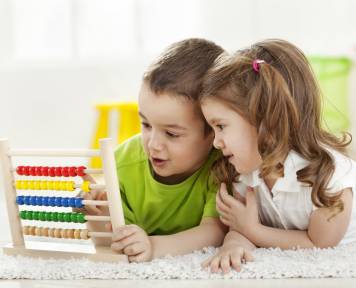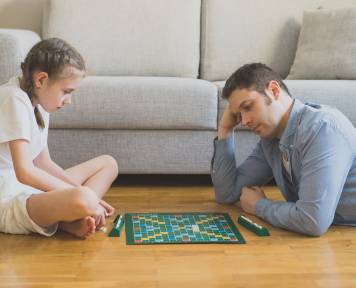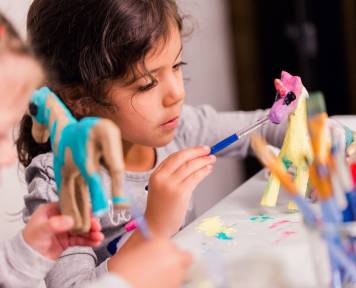Multiple intelligences and games for each one of them
We tell you what multiple intelligences are and how to boost them through play. Take note!
child care
Share

As we discussed in a previous article, the multiple intelligences defined by psychologist Howard Gardner in the 1980s, and that revolutionised learning methods, reflect the individual capacity and ability that can be developed to achieve a certain skill.
This author defined eight intelligences that all human beings have: linguistic-verbal, logical-mathematical, spatial, musical, bodily-kinaesthetic, interpersonal, intrapersonal and naturalist. These intelligences interact with each other and work together in a complex way.
Moreover, they can be encouraged at home through play. Choosing these games appropriately can help little ones to develop their multipotentialism.
What games boost the multiple intelligences?
1. Linguistic-verbal intelligence
This is developed through activities related to vocabulary, communication and languages. To boost this type of intelligence, we can choose boardgames that involve describing, miming or telling a story; also, games using memory cards, word building...
For younger ones, all of those toys that involve symbolic play, where they copy situations they observe in real life and try to imitate them, such as, for example, pretend professions: doctors, chefs, vets, mechanics...Even series or collections of Playmobil toys that reproduce settings.
2. Logical-mathematical intelligence
To help boost it, we can choose games that work with manipulative mathematics, like the abacus, the pink tower (icon of Montessori materials), also toys that fit together, stackable geometric figures or puzzles. For older children, chess, strategy games and those that require working on logical reasoning, solitaire. Construction games and scientific experiments are also very useful.


3. Spatial intelligence
This type of intelligence is related to the artistic part: people who excel at this usually have capacities that enable them to conjure up mental images, draw and detect details. They are boys and girls who display a special sensitivity towards colour, lines, shapes, figures and space. Playdough, balls or games with blocks are the most appropriate for early ages, while doing mosaics, building or connecting games, puzzles or games with puzzles are the most appropriate for middle ages.
4. Musical intelligence
In this case, we should look for games that involve singing, dancing, playing an instrument, following rhythm...We can also get them to take part in attending musical activities, such as concerts as a family, or getting them used to listening to all types of music at home, instead of television, depending on the type of activity. For the younger ones, we can choose musical stories, with hidden buttons of tunes among the pictures.
5. Bodily-kinaesthetic intelligence
Through this intelligence, we develop the ability to use the body to carry out activities or solve problems. To boost it, we can encourage games with movements such as obstacle races, if we are in an open environment. If we are in enclosed spaces, we can use the game “Simon says”, telling them that Simon says jump, dance, run, go around the table three times or anything else we can think of. Playdough, arts and craft games, skating, bike riding or riding a scooter and doing group exercises also help them to develop this skill.
6. Interpersonal intelligence
Try to encourage group activities and games, such as board games where more than 4 people take part, or card games. Summer schools and camps are also a good option, where they learn to interact with other children outside of their comfort zone, and also playing team sports and games.


7. Intrapersonal intelligence
Very independent children know their feelings well, what they like and what they don’t like. So the best way of encouraging them is to let them take on age appropriate responsibilities, both domestic and participatory in other family occasions. Symbolic play materials also help to reinforce these qualities.
Conversations also motivate them; taking part in conversations where they feel they are the protagonists and can give their opinion about a topic or issue that is being debated also helps them to reinforce this type of intelligence.
8. Naturalist intelligence
Toys to explore nature such as microscopes, binoculars, telescopes...., rubber figurines that enable them to understand the cycle of life or collections of vegetables or animal figures are some of the resources that can help them to boost this type of intelligence. Moreover, any outdoor activity in the mountains or sea, such as hiking routes or multi-adventure activities will excite them.






